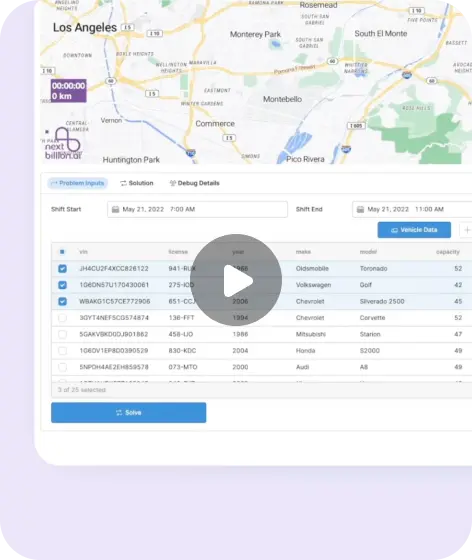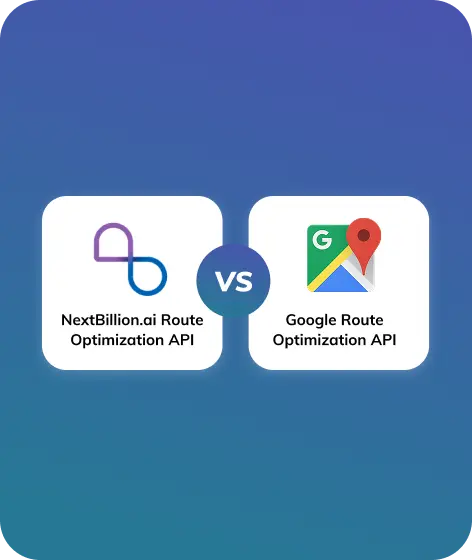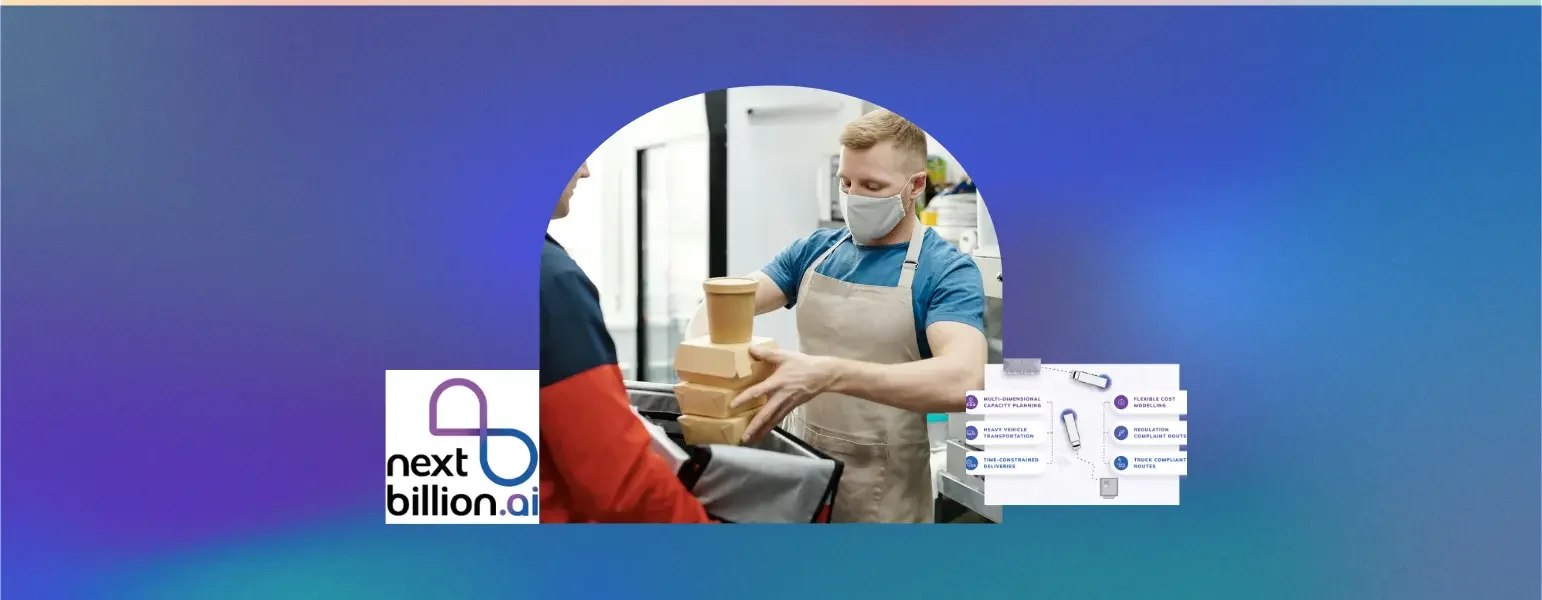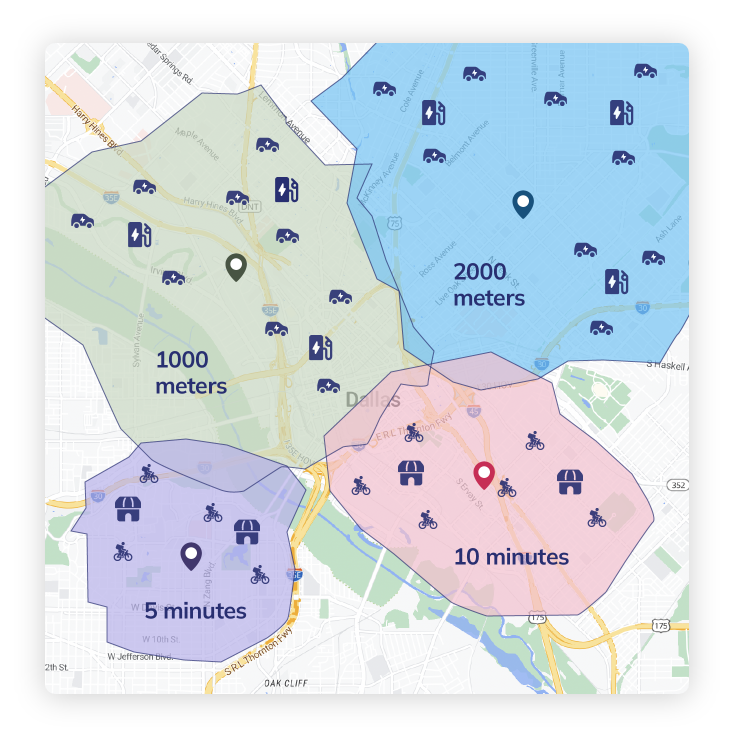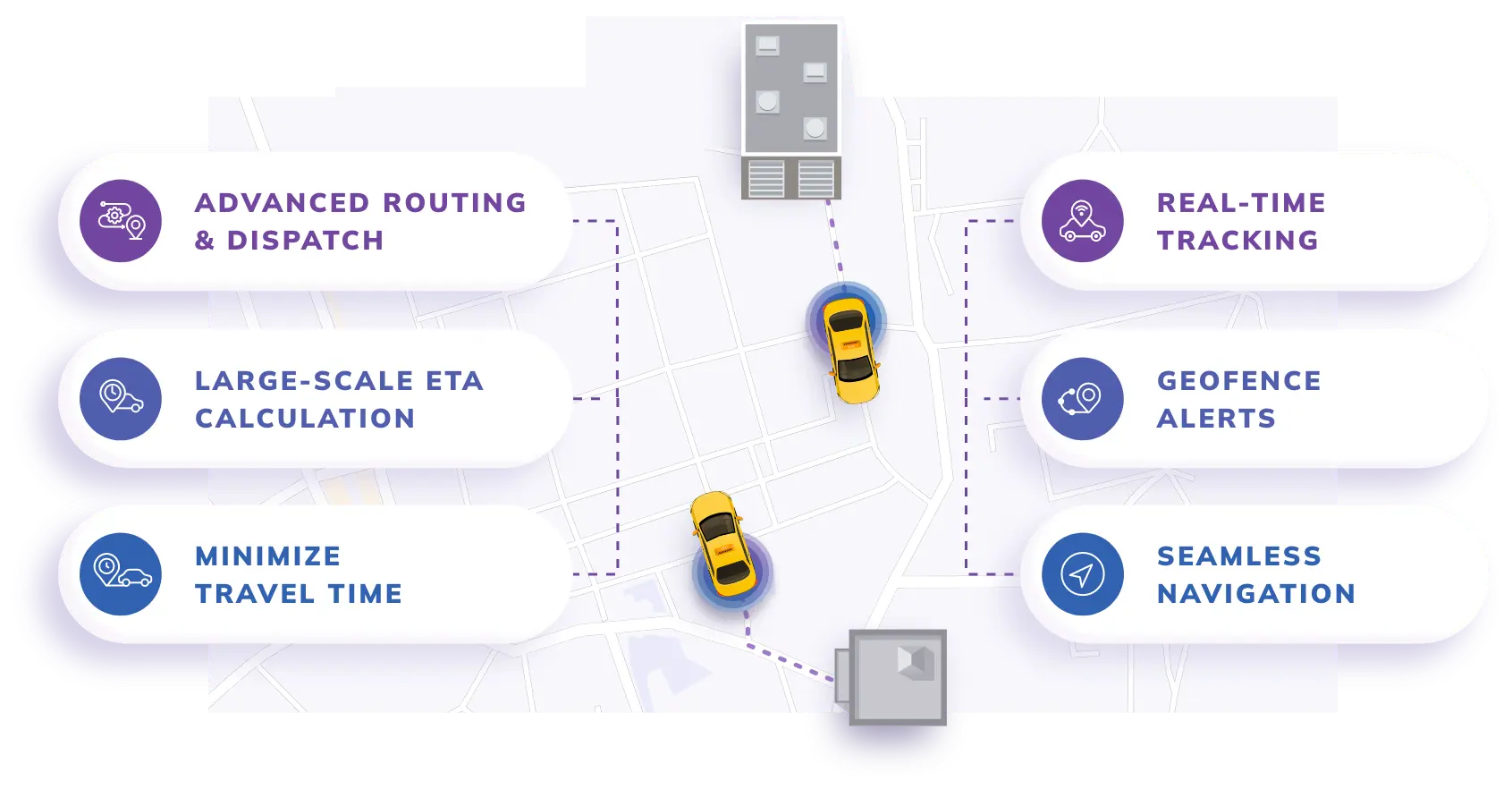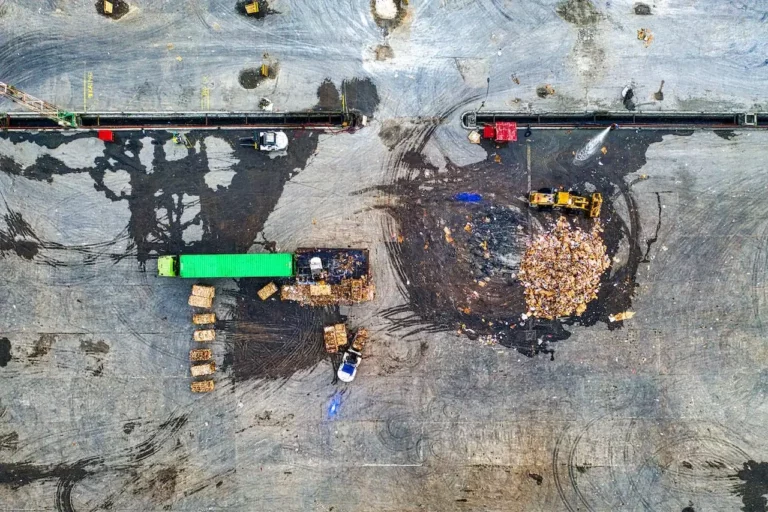
Table of Contents
Delivery route optimization often stands out as a pivotal solution for service providers trying to overcome logistical challenges in the food delivery domain. This process involves using advanced technology and other relevant algorithms to engineer the most efficient paths for delivery drivers. The outcomes of optimized delivery routes are far-reaching and easily help fulfil the objectives of businesses in the food industry.
In this guide, we will go through the relevant technologies, methods, and real-world applications that can help you build the route optimization workflow for food delivery services. This proves to be beneficial for restaurant owners, logistics managers, or those simply curious about the mechanics that allow their favorite cuisine to arrive on time.
Understanding the Route Optimization in Food Delivery

Route optimization in food delivery involves planning the most efficient delivery routes by leveraging real-time data and road updates. It easily considers multiple factors to maximize driver productivity, ensure timely deliveries, and minimize operational costs.
Route optimization involves allocating food orders based on driver location and availability. A few more advanced route optimization systems also consider road and vehicle factors, such as driving mode (bike or van), vehicle capacity, road conditions, weather impact, and delivery zones.
The ultimate goal of considering these factors is to reduce operational costs and achieve faster deliveries through optimized resource utilization. This helps promote the most effective route optimization strategies for sustainable operations.
Advanced food delivery route optimization empowers all food delivery businesses to improve their service quality, reduce costs, and remain competitive.
The Importance of Efficient Routing
Food order and delivery processes are expanding three times faster than dine-in traffic. Moreover, today’s customers expect faster deliveries without compromising service or quality.
This demand surge has also intensified competition and made efficient routing and delivery operations necessary. Here’s how:
1. Improved Delivery Times
The accessibility of online ordering mobile apps has established a new standard of convenience, speed, and transparency. Customers expect efficient service from the second they order something from an online food delivery app. This often necessitates highly optimized food delivery platforms that specifically focus on providing a smooth and reliable customer experience.
The food delivery market has grown rapidly with increasing competition among online delivery apps that offer services in under 30 minutes. This improved pace highlights the key role of food delivery route optimization in meeting the industry benchmark.
2. Lower Costs
The online food delivery business is competitive, so you must reduce all overheads to improve your profit margins. Food delivery route optimization can help you achieve this by streamlining resource utilization and improving overall efficiency.
Routing is all about strategically managing all the elements involved in the delivery process without incurring additional expenses in the form of fines or late delivery refunds.
For instance, your drivers will take shorter, more efficient routes using route optimization software. This specifically lowers fuel costs for the business in the long run.
Hence, route optimization reduces the overall time and money spent on deliveries by streamlining routes and minimizing delays. This leads to lower labour costs, as fewer driver hours can complete the same number of deliveries.
3. Enhanced Customer Satisfaction
Consumers expect more than just a meal when they order anything online; they demand delivery efficiency.
Speed and time efficiency are key to success because late deliveries can lead to frustration, negative reviews, and loss of business.
Therefore, optimizing the delivery process with effective routing strategies helps businesses maintain a competitive edge.
Advanced food delivery route optimization systems play a key role in meeting such growing consumer demands. They can easily provide accurate delivery time predictions by integrating traffic data and real-time locations.
Customers who want to know their order status will highly value such transparency. These sophisticated route optimization systems consider a multitude of factors to provide the best, practical delivery timeframe, taking into account the realities of food preparation and delivery logistics.
Challenges To Consider in Food Delivery Logistics
Food delivery logistics involves food preparation, customer service, and managing delivery time windows. You must identify the common challenges inherent to your business to anticipate problematic areas and avoid costly mistakes.
Currently, here are the common challenges in food delivery logistics:
1. Traffic Congestion
Urban traffic congestion delays food deliveries, leads to wait times longer, and causes dissatisfied customers. Delivery companies must optimize routes using real-time traffic data and invest in micro-fulfillment centres to reduce delivery distances.
2. Unpredictable Orders
Fluctuations in customer demand make it difficult to predict order volumes accurately. Peak hours, special promotions, and unexpected surges can overwhelm delivery systems. AI-driven demand forecasting and its correct implementation can easily optimize workforce allocation and streamline operations.
3. Last-Mile Delivery Challenges
The final stage of delivery, known as the last mile, is often the most expensive and complex part of the logistics process. Factors like incorrect addresses, gated communities, and building access restrictions can lead to delays. Advanced GPS tracking, automated dispatch systems, and alternative delivery methods like drones or electric bikes can help mitigate these issues.
Leveraging NextBillion.ai’s APIs for Route Optimization
The best way to ensure an efficient food delivery and logistics process is to use the most effective Application Programming Interface (API) for route optimization. NextBillion.ai’s API is one such solution that helps you generate delivery and field service routes without any hassle. Several product leaders dealing in high-performing transportation and logistics are already using this route Optimization API for more effective operations.
1. Using Route Optimization API for Dynamic Routing

NextBillion.ai’s route optimization API can be easily integrated into your Transportation Management System (TMS) or logistics SaaS solution to strengthen their capabilities. This enables you to set up the route optimization roadmap for efficient food delivery within a week. The results are optimized delivery routes and reduced delays in delivering orders.
The route optimization API also enables you to add advanced routing and dispatch capabilities to your telematics and ERP systems for improved operational efficiency.
2. Implementing Geofencing for Efficient Delivery Management

You must define geographical boundaries to allocate drivers and agents to deliver food orders. This also involves informing your customers by sending notifications based on geofence entries and exits.
NextBillion.ai’s Geofencing API is a unique solution that helps you deliver dynamic and contextual location experiences. This enables you and your customers to obtain better visibility, improve scheduling, and optimize the dispatch of assets and fleets instantly.
Geofencing API also enables you to manage resources efficiently and reduce wait times across operations and deliveries.
Steps to Build a Route Optimization Workflow

Building and implementing a food delivery route optimization workflow in your business can significantly improve efficiency, save time, and reduce unnecessary costs. NextBillion.ai’s Route Optimization API is a powerful tool that helps businesses optimize their delivery routes by solving both Single and Multi-Vehicle Routing Problems (VRP).
Follow these step-by-step instructions to start building a route optimization workflow for your business.
Step 1: Assess Current Delivery Operations
You must analyze existing delivery workflows before implementing a new route optimization system. Start by evaluating current delivery times, fleet performance, and common bottlenecks in the process. Identifying inefficiencies also helps you establish a baseline for improvement. Some common challenges to watch out for are:
- Excessive idle time
- Long detours
- Missed delivery windows
For example, a food delivery company may notice that orders frequently arrive late because of poor food delivery route planning during peak traffic hours. Addressing such inefficiencies early with food delivery route optimization APIs can help streamline future operations.
Step 2: Select Appropriate Route Optimization Software
Choosing the right route optimization software helps you automate delivery route planning and improve operational efficiency. Make sure that the selected route planning software integrates well with your company’s delivery management system. It must also support real-time tracking and offer efficient route adjustments based on real-world conditions.
One of the leading providers in this space is NextBillion.ai, which offers powerful APIs for route optimization, geospatial mapping, and delivery planning. The platform provides the most efficient, custom AI-driven routing personalized according to specific business needs, such as last-mile delivery and fleet management.
Other popular route optimization tools provided by NextBillion.ai include:
- Route Optimization API: Delivers highly customizable and cost-effective routing solutions for businesses with complex logistics needs.
- Distance Matrix API: Enables real-time distance calculations across multiple locations, ideal for dynamic route adjustments.
- Geofencing API: Helps define custom geofences for delivery zones, reducing inefficiencies in last-mile logistics.
- Navigation API: Ensures simple, fast, and accurate route guidance.
Businesses can easily leverage NextBillion.ai’s APIs to create highly accurate, scalable, and real-time optimized routing solutions according to specific requirements.
Step 3: Configure Optimization Constraints
The next step is to configure key logistics optimization parameters after selecting the software of your choice. These constraints help refine the routing process to match specific business needs, such as:
- Delivery Time Windows: Ensure that high-priority or perishable goods reach customers within a specified timeframe.
- Vehicle Capacities: Prevent the overloading of delivery vehicles to maintain safety and efficiency.
- Priority Orders: Assign special routes for urgent deliveries, such as medical supplies or same-day grocery shipments.
For instance, a food delivery agency might prioritize express delivery orders by assigning them to the fastest available routes. This helps ensure these orders always arrive ahead of time.
Step 4: Implement Real-Time Data Integration
A route optimization system requires real-time data inputs to adapt to various changing conditions. You can integrate live traffic updates, weather conditions, and new order requests to make informed decisions and reroute drivers as needed.
Key data sources for real-time integration include:
- GPS tracking to monitor vehicle locations.
- Weather APIs to predict delays due to adverse conditions.
- Order management systems to process last-minute order changes.
For example, if a sudden thunderstorm impacts certain delivery routes, the system can automatically reroute food delivery drivers to avoid flooded roads for timely deliveries.
NextBillion.ai’s Route Optimization API is particularly useful in this field. It easily processes real-time traffic, vehicle types, and operational constraints to deliver the most efficient delivery routes. Food delivery companies using this API can adjust their logistics quickly in response to traffic congestion, road closures, and other real-world challenges.
Step 5: Test and Refine the Workflow
You must also conduct trial runs and evaluate performance metrics after setting up the food delivery route optimization workflow. Make sure to analyze all key indicators, such as delivery time adherence, fuel consumption, and customer satisfaction ratings.
Steps to refine the route optimization workflow in the final stage include:
- Running pilot tests on different routes and analyzing efficiency.
- Gathering driver feedback on route usability and system accuracy.
- Adjusting constraints and algorithms based on real-world performance.
For instance, a food delivery company may find that its route planning software-generated routes do not account for local road restrictions. Hence, they can incorporate driver or agent feedback to refine the system to generate more accurate and efficient routes.
Best Practices for Maintaining an Efficient Workflow
An optimized food delivery route planning system is only the first step in ensuring efficient food delivery operations. You must also implement ongoing improvements, train personnel, and incorporate customer feedback for efficient operations throughout the year. Below are some best practices to maintain an effective and responsive workflow.
1. Continuous Monitoring and Adjustment
An efficient workflow requires continuous assessment and real-time adjustments. Regularly review route data, driver performance, and API analytics. This helps you identify inefficiencies and optimize routes for better results.
Key aspects of monitoring include:
- Tracking Route Deviations: Identify when drivers take longer or alternative routes and adjust plans accordingly.
- Analyzing API Insights: Use data and analytics from route optimization APIs to detect patterns, such as recurring traffic congestion or frequent delays.
- Assessing Fleet Performance: Monitor fuel consumption, delivery times, and vehicle maintenance to maintain efficiency.
For example, a food delivery company might notice through API analytics that a particular route experiences heavy congestion during lunchtime. Hence, they can adjust the routing strategy to avoid peak-hour bottlenecks, reduce delays, and improve service reliability.
NextBillion.ai’s ride-hailing solution helps businesses refine their delivery routes frequently by incorporating real-time traffic updates, vehicle constraints, and predictive analytics. This helps ensure that only the most efficient paths are always chosen for food deliveries.
2. Training Delivery Personnel on Route Optimization
Technology alone cannot guarantee an efficient delivery workflow. Your food delivery agents or drivers must be trained to follow optimized routes and use real-time updates effectively. Educating delivery personnel on best practices helps minimize human errors and improves their performance.
Best practices for driver training include the following:
- Familiarizing Drivers with Route Optimization Tools: Ensure they understand how to access and interpret real-time updates from the route optimization software.
- Providing Guidance on Alternative Routes: Teach drivers how to adapt when unexpected obstacles arise, such as road closures or heavy traffic.
- Encouraging Communication: Drivers must report inconsistencies in routing suggestions to help refine the system for future deliveries.
For instance, a logistics company may introduce training sessions where drivers learn how to make route adjustments using their mobile apps. If a driver encounters a blocked road, they can switch to a pre-approved alternative. This reduces delays without depending on any manual dispatcher intervention.
Businesses can enable real-time driver notifications and automated route reassignments by integrating NextBillion.ai’s APIs which ensure delivery teams stay on the most efficient path.
3. Gathering and Analyzing Customer Feedback
Customer feedback helps you analyze the effectiveness of delivery workflows. You can easily fine-tune your strategies by understanding customer experiences to improve satisfaction and retention.
Key areas to focus on include:
- Delivery Timeliness: Were orders delivered within the promised time window?
- Service Quality: Did the driver follow delivery instructions properly?
- Overall Customer Satisfaction: Are customers happy with the speed and reliability of their deliveries?
For example, a food delivery company might send post-delivery surveys asking customers to rate their meal experience. If multiple customers report delayed shipments despite route and logistics optimizations, it may indicate an issue with real-time data accuracy or last-mile logistics.
NextBillion.ai’s geospatial and delivery optimization APIs can help you analyze customer location data and adjust service zones accordingly. This also enables you to maintain delivery windows more accurately and improve your service levels.
About Author
Bhavisha Bhatia
Bhavisha Bhatia is a Computer Science graduate with a passion for writing technical blogs that make complex technical concepts engaging and easy to understand. She is intrigued by the technological developments shaping the course of the world and the beautiful nature around us.


